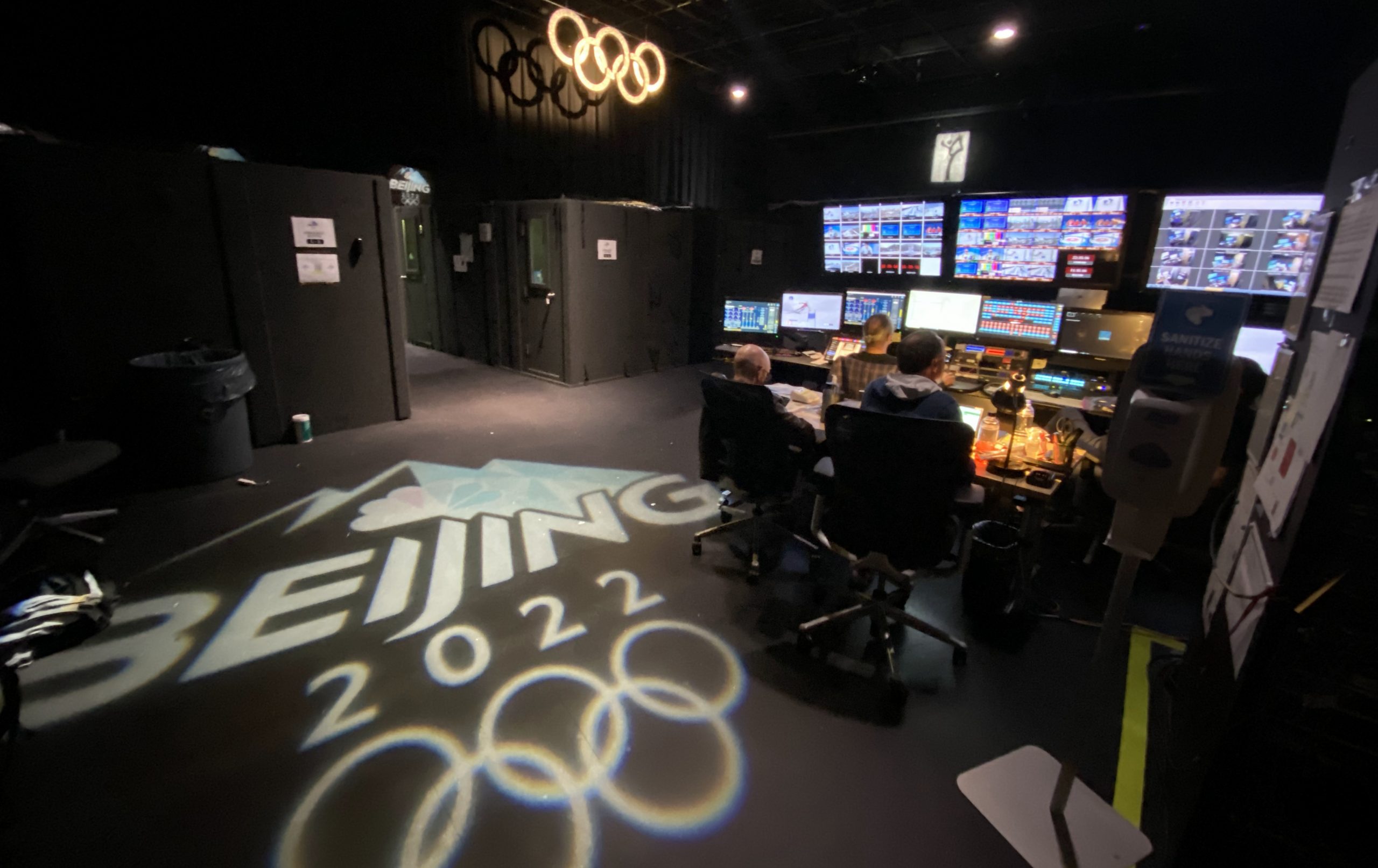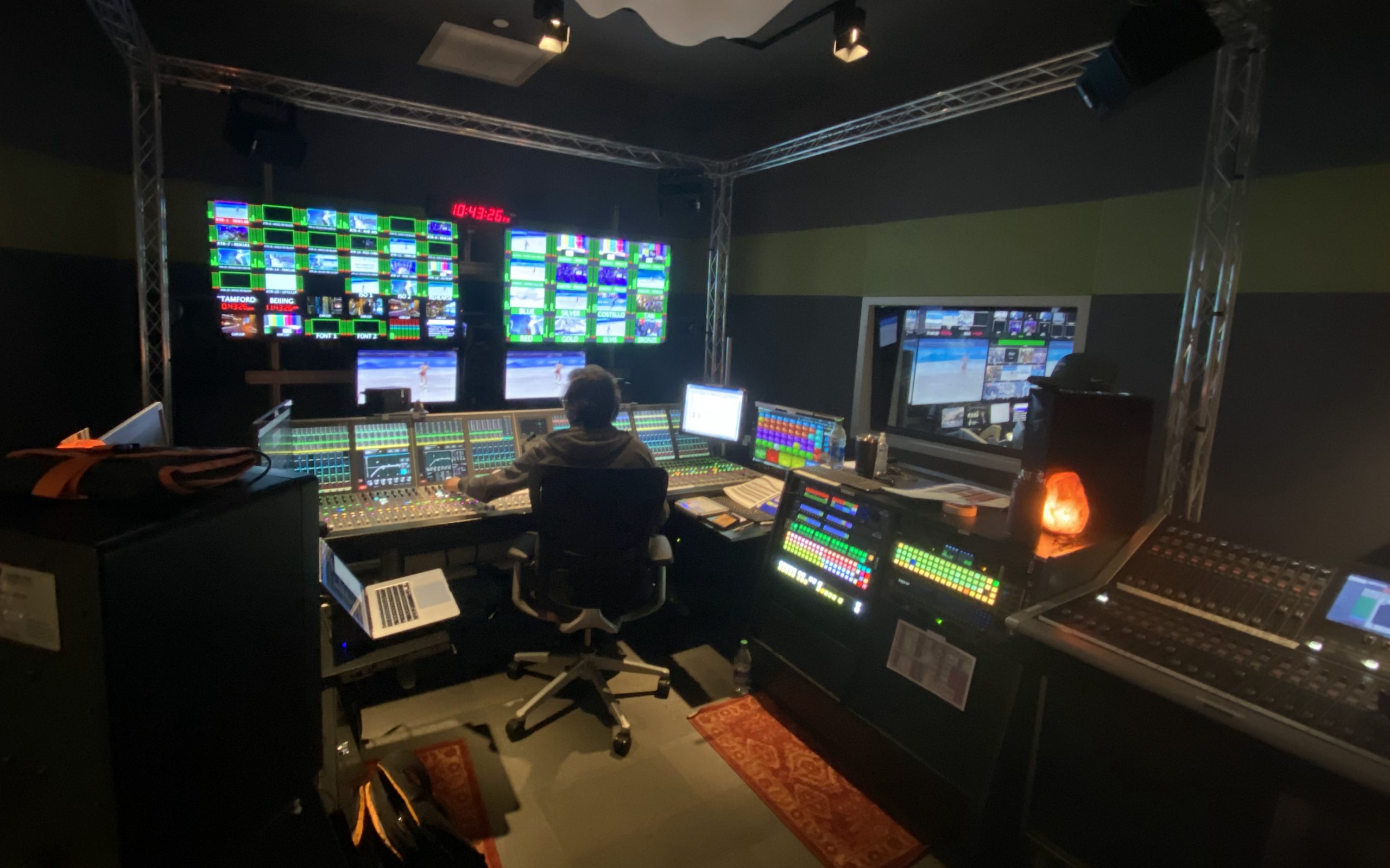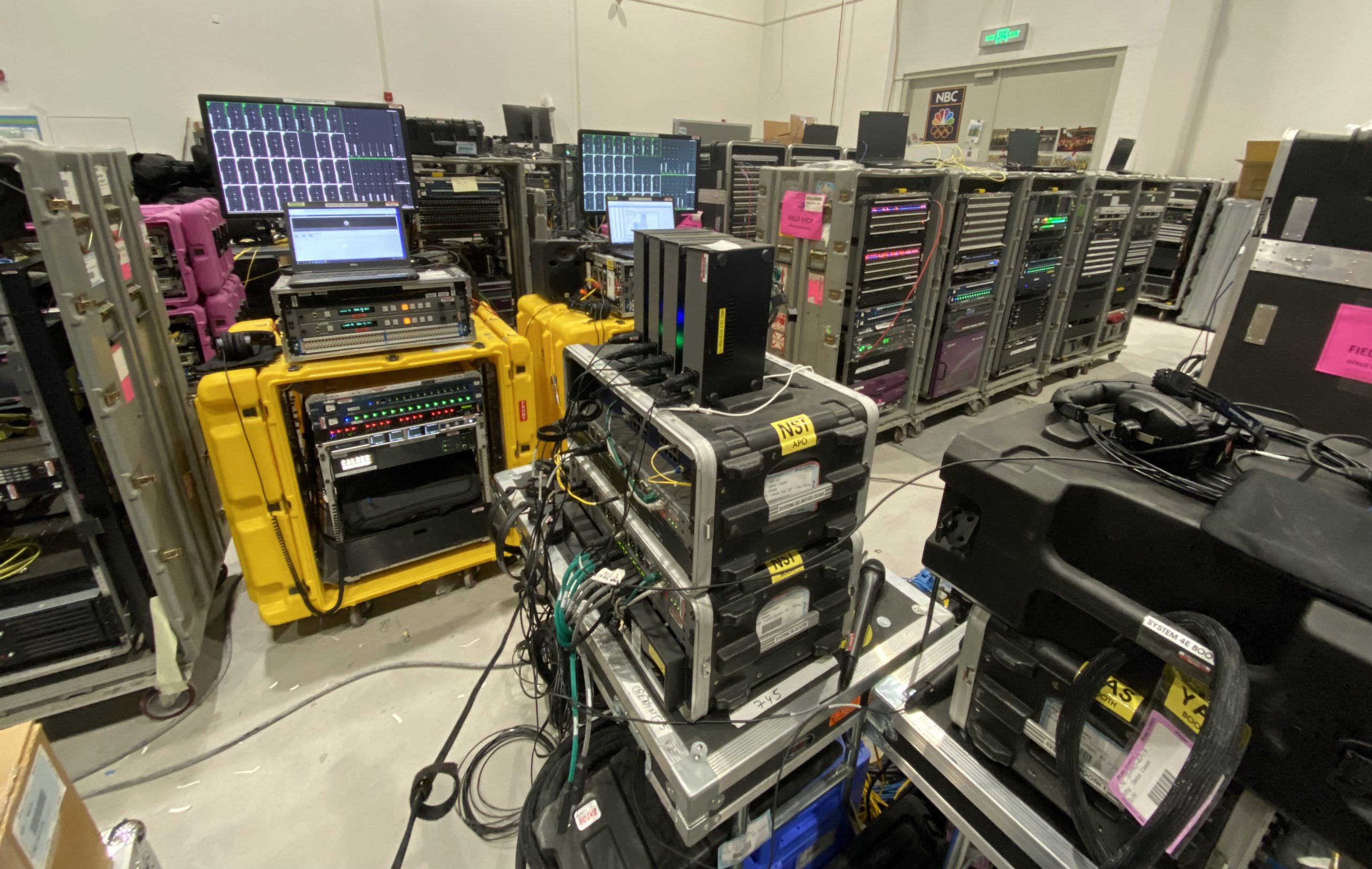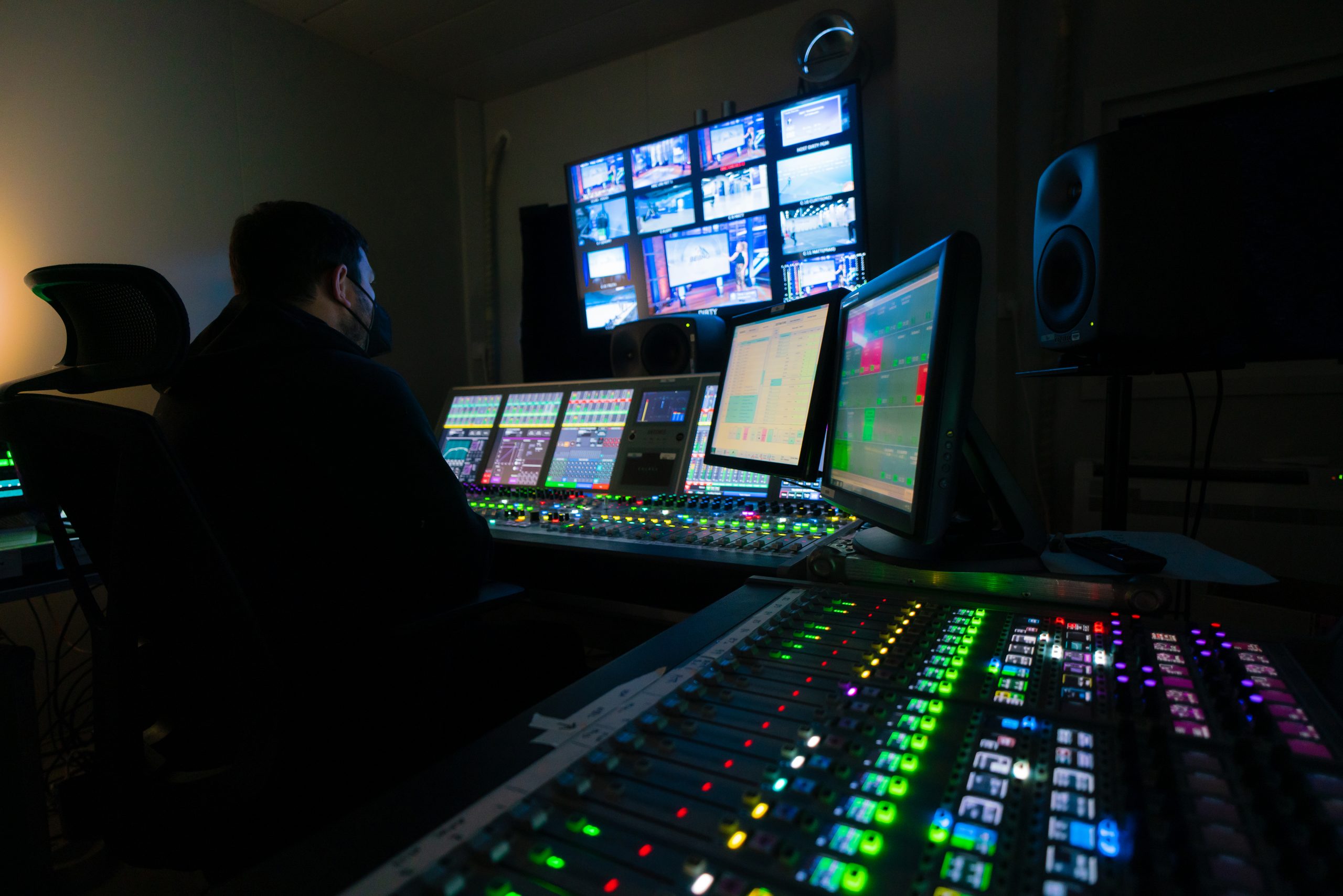Beijing 2022: NBC Olympics’ Karl Malone on How Audio for the Winter Games Came Together
COVD protocols, 13-hour time difference are just two of the challenges
As the 2022 Winter Olympics in Beijing moves towards its completion, the most significant accomplishment may be that the Games happened at all, taking place in an environment that required the artificial creation of one of its most basic elements — snow — and during the worst global medical disaster in a century. Meanwhile, its audio ironically benefited from some of the disruption around COVID: the largely diminished numbers of spectators and their concomitant noise, and the decision not to apply artificial crowd sound (a technical feat raised to an art form for sports during the pandemic) meant that viewers could hear the sound of winter sports like they never had before.
“You would think that each Olympic Games should get a little easier,” observes Karl Malone, director, sound design, NBC Sports and NBC Olympics. In fact, everything was more difficult for the Beijing 2022 Winter Games, not least the fact that it came just six months after the closing of the Tokyo Summer Games. But, as difficult as Tokyo 2020 was, mid pandemic, it was probably the most successful Games from an audio perspective. Even though the Olympic Playbook Rules banned international and local fans from attending, there were enough country team members at certain venues to give a nice opportunity for some crowd reactions.
“More important,” he continues, “we were able to get down into the details of the specific sports sound, which is something we have never had the opportunity to do with an Olympics and with so many sports at one time. [Not using] augmented crowd sound gives us the ability to get closer to the sounds of the Games and the physical endurance and experience of the athletes.”
The logistics of the Winter Olympics were challenging for broadcasters. Not only did the Games take place on the heels of the Summer Games in Tokyo, but the pandemic-induced global supply-chain constrictions added a new layer.
“Having to ship everything directly from Tokyo to Beijing meant we wouldn’t get our hands on all of our technical infrastructure until it was released from Chinese customs and into our Beijing warehouse,” says Malone. “This eventually happened in November, and it was then that we started to rebuild our systems and reconnect them to [NBC Sports headquarters in Stamford, CT] for testing. We decided that we would push on our remote workflows, which we have used in some form or another since Torino 2006 and leaned hard on for PyeongChang 2018, with Calrec RP1s, Tieline VIAs, and Medialinks MADI-over-fiber to the U.S. The challenges in the logistics of just getting into China four months ago, alongside the protocols we would be affected by once on the ground, meant we knew we need to rely, in full confidence, on our tried-and-tested remote technologies.”
A Truly Remote Production
NBC’s production team relied on its experience with REMI-type production techniques and best practices to make a long-distance production feel and sound seamless.
“We decided to keep three studios in the Beijing International Broadcast Centre and to run all three remotely, with full production coming from our Stamford Production Operations Center,” Malone explains. “We were producing our nightly NBC Network primetime show out of Stamford with a studio in Beijing, one in Stamford, and one in Los Angeles’s SoFi Stadium during the week of the Super Bowl. Bringing the primetime show home to Stamford maxed the facility to a technical capacity of eight studios and production-control rooms alongside four remote trucks on the loading dock producing two Beijing Hockey venues and the Extreme Park Freestyle events, as well as the Opening and Closing Ceremonies. That meant there were no physical audio consoles in Beijing looking after those four venues or the three studios in the Beijing IBC. Everything was controlled from Stamford’s Calrec Artemis consoles using the RP1s in Beijing to build local mix-minuses and route the microphones to embedded vision/camera paths, as well as MADI paths back to the U.S. where we cut the shows live to air.”
Immersive Sound
Immersive audio was a major focus for this Beijing 2022, and NBC Olympics built on its most recent experience in Tokyo for that, as well as deploying a range of specific equipment and products and dedicating a team to it. NBC Olympics Senior A1/Audio Design Engineer Mike DiCrescenzo and submix A1 Fred Hedemark are responsible for the nightly live network primetime audio mix and for integrating the height microphones and mixes from each venue into the immersive broadcast.
“NBC produced the primetime network show from Stamford in 1080p HDR with Dolby Atmos immersive sound on its 4K distribution service to the U.S.,” says Malone. “Every truck/flypack facility we had at a Beijing venue, as well as the four trucks in the Stamford loading dock, delivered 16 channels of audio made up of a full-mixed NBC 5.1 program mix with NBC announcers, but also 12 more audio channels made of individual isolated microphones and including up to eight channels of height microphones, which were mixed live into the four overhead channels.
“Having a single location and mix team for producing the broadcast,” he continues, “guarantees us a consistent approach and philosophy on how we want the sports mixes to sound to the primetime audience. The primetime-audio–control room was rebuilt over the holiday break with JBL 708 speakers in a 5.1.4 overhead configuration, along with immersive metering upgrades to our RTW meters. We made great use at all venues — including our lakeside Super Bowl set — of the new Audio-Technica BP3600, which is an immersive eight-capsule microphone in an 8.0 configuration. Four capsules are for the 4.0 height ambience, and four are for the ‘eye-level’ ambience part of the 5.1. Again, the consistency of using the same microphones across the Beijing and the U.S. venues helps in our control of the creative aspects of the production.”
Capturing FX and Sound Design
The minimal crowds in and around many of the Beijing venues helped isolate and capture many of the critical sounds of the sports, with ice sports of particular interest (especially in the wake of controversy surrounding Russian skater Kamila Valieva).
“’Underwater’ or ‘under-ice’ contact microphones from Audio-Technica help us with the control of the Figure Skating events, beautifully mixed by NBC A1 Ryan O’Gorman,” says Malone. “The nature of contact microphones means that we can get the sound of the skates without any PA slap from the 95-dB venue sound level of the skaters’ music tracks playing directly onto the ice. Delaying the over-ice crowd mics [above the rink] in time with a direct feed of the PA and with ‘clean’ ice mics allows us near total control of the quality of the audio from the venue.”
(Malone emphasizes the “near” total control : “Unfortunately, we cannot control the PA levels that the athlete requests for their music.”)
“Sound design was also a challenge as we were unable to get any onsite surveys of the venues due to the COVID restrictions,” he recalls. “We relied heavily on our local NBC Chinese team members to bring us on virtual surveys so that we could check the layout of the venues and ascertain camera positions, PA-speaker positions, or just the room tone of certain venues. NBC again worked very closely with the host broadcaster Olympic Broadcast Services in requesting splits of certain host microphones and ambience submixes in order to help us in building our NBC audio coverage of the events. As an example, being able to cross from an OBS handheld camera with BP4029 stereo shotgun to an NBC camera with the same Audio-Technica stereo microphone produces a seamless transition in both quality and stereo width and provides a stable and dynamic soundscape.”
Looking back on the months-long process of getting the complex array of events into a broadcast package on the other side of the globe, Malone is weary but proud of a remarkable team effort.

NBC’s Off-Tube Factory in Stamford features booths where announcers call the action remotely. (Photo: Mike Moutopoulos)
“The Stamford operation is phenomenal,” he says, “with over 1,500 crew working there 24/7, many saying ‘Good morning’ at 6 p.m. and ‘Good night’ at 8 a.m. Obviously, keeping on Beijing hours is important. There is always either the primetime show, USA daytime programming, Twitter and Peacock live studio shows, even a TikTok live show going on.
“NBC decided to have all announce teams at home in our Off-Tube Factory,” he continues, “which is an amazing facility of acoustically isolated and comfortable ‘NBC-made’ announce booths with a central ‘Mini -BOC’ [Broadcast Operations Center]. Announce teams can call events in Beijing with speed-of-light throws to their reporters interviewing athletes at the venues.
“We are so proud and thankful to all our crews in Beijing,” Malone adds. “The daily challenges of being in China inside the imposed closed-loop bubble are countless. Just getting to your venue is difficult — filled with numerous health checks and restrictive barriers to movement, [even] in just getting from the hotel to the bus.
“I believe this to be the most challenging Games that many of us have worked on,” he continues. “But we feel very fortunate to have the opportunity to be capturing the sound of these games and to be telling the stories of the athletes who have sacrificed so much to be at the pinnacle of their sports. If it wasn’t for the passion of our NBC Olympics leadership, in terms of technology as well as production, I don’t think we would be looking forward to the next Summer Games, in Paris in 2024, with so much excitement and optimism as we are now, coming to the close of the 2022 Beijing Winter Games.”



